
Digital Lockout/Tagout: Is Paper-Based LOTO Still Defensible in 2025?
Lockout/Tagout (LOTO) procedures are one of the last bastions of analog safety compliance. While nearly every other part of workplace safety has seen digital upgrades—training, incident tracking, inspections—most companies still manage energy control procedures using binders, tags, and checklists.
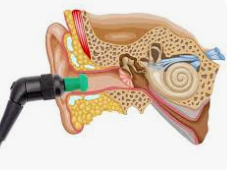
Rethinking Hearing Conservation: Why OSHA Should Replace Audiograms with Otoacoustic Emissions Testing
Workplace hearing loss is insidious. It doesn’t happen overnight, and by the time it shows up on a standard audiogram, the damage is already done—and permanent

Gamifying Safety Training: Easy Wins for Small Companies
For small companies, safety training often feels like a chore—for both employees and managers. Traditional safety training methods such as slide decks, printed manuals, and lecture-style sessions can be dull and forgettable. Worse, they often result in poor retention and low engagement, especially when workers feel like it’s just another checkbox.

5 Early Warning Signs Your Safety Program Is Failing (And How to Fix Them Before It’s Too Late)
A well-run safety program doesn’t just check boxes—it actively protects people. But even experienced companies can miss the signs that their safety program is starting to slide off course. By the time an injury or OSHA citation brings the problem to light, it's already too late

Reimagining Safety: Using AI to Predict Near Misses Before They Happen
Artificial Intelligence (AI) is transforming safety management in ways once thought unimaginable. While AI-driven hazard recognition and automated compliance tracking are becoming more common, one of the most forward-thinking applications is the use of predictive AI models to identify near-miss events before they occur.

Choosing the Right Earplugs: Understanding NRR and What It Really Means for Your Hearing
Protecting your hearing in noisy work environments is not just a best practice—it’s a necessity. Whether you're exposed to power tools, industrial equipment, or loud recreational settings like concerts or shooting ranges, selecting earplugs with the appropriate Noise Reduction Rating (NRR) can make the difference between long-term hearing health and permanent hearing loss.
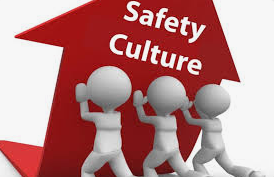
How Safety Culture Impacts Hearing Loss Cases in the Workplace
When it comes to workplace hearing loss, most people think of loud equipment, missing hearing protection, or poorly maintained machines. While these are critical risk factors, they’re only symptoms of a deeper issue: safety culture. In workplaces with high rates of occupational hearing loss, there’s often a cultural breakdown that goes beyond decibels and earplugs.
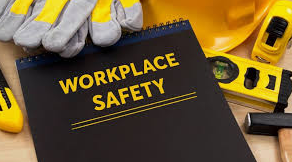
Why Small Businesses Should Prioritize Safety Early: The Case for Adopting a Safety Management System
Starting a business is an exciting time filled with ambition, innovation, and a focus on growth. However, one critical area that is often overlooked by small or upstart companies is workplace safety. Many entrepreneurs assume that formal safety systems are only necessary once a company scales or enters high-risk industries. In reality, adopting a Safety Management System (SMS) or consulting with a safety professional early in the process can save lives, reduce liability, and lay a stronger foundation for sustainable growth.

The 5 Safety Policies Every Small Company Needs Before Hiring Workers
Starting a business is exciting—but nothing derails progress like a preventable injury or a surprise OSHA citation. If you're about to hire your first employee (or just did), now is the time to put a few key safety policies in place. You don’t need a full-blown safety manual—just the core essentials that protect your people and show regulators you’re serious about safety.

Should We Modernize OSHA’s Hearing Loss Age-Correction Tables?
In a February 2024 interpretation letter, OSHA responded to an important question raised by clinicians from Premise Health: Should employers be allowed to use updated, NHANES-derived age-correction tables instead of OSHA’s outdated 1970s-era version in assessing age-related hearing loss for older workers? The answer, as OSHA laid it out, is nuanced—but undeniably significant for occupational health professionals striving for fairness and accuracy in hearing loss evaluations.

Understanding the NIOSH Lifting Equation: Practical Use for Safer Lifting in the Workplace
The NIOSH Lifting Equation is a scientific tool developed by the National Institute for Occupational Safety and Health (NIOSH) to help evaluate the safety of manual lifting tasks in the workplace. Whether it's a one-time lift or a highly repetitive task, the equation offers a structured way to assess the risk of musculoskeletal injury—especially lower back injuries, which are among the most common workplace injuries in physically demanding jobs.

When Lockout Isn't an Option: OSHA Clarifies “Alternative Methods” in 2024 Interpretation
The U.S. Occupational Safety and Health Administration (OSHA) has issued a significant letter of interpretation (LOI) dated October 21, 2024, clarifying how employers must handle service and maintenance tasks that require machine power — and how far they can rely on so-called “alternative methods” under the Lockout/Tagout (LOTO) standard, 29 CFR §1910.147.

Safely Interacting with Robots in Teach Mode: Best Practices for Human-Robot Collaboration
As industrial robots become increasingly common in manufacturing and warehouse environments, the need for safe human-robot interaction during programming and maintenance tasks grows more critical. One of the highest-risk situations occurs when robots are placed in teach mode, allowing technicians to guide or program the robot manually. This mode often requires proximity to the robot’s moving parts and can bypass normal safeguarding. Without proper controls and procedures, even a slow-moving robot can cause serious injury or death. Fortunately, standards, technology, and training can help mitigate these risks.
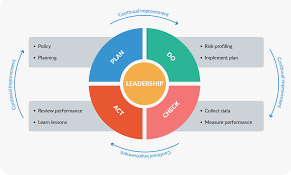
The Importance of Quality Data for Continuous Improvement in Safety Management Systems
In the world of occupational safety, the phrase “you can’t improve what you don’t measure” holds especially true. But not all measurements are created equal. For a Safety Management System (SMS) to mature and evolve, it must be built upon quality data—data that not only reflects the current state of the organization but also points to where risk lives and where interventions can make a measurable difference. Unfortunately, many organizations still rely heavily on lagging indicators, or worse, adopt misleading pseudo-leading indicators that offer the illusion of progress while concealing critical system weaknesses.

How to Handle Baseline Audiograms for Rehired Employees
When it comes to occupational hearing conservation, one often-overlooked challenge is managing audiometric testing for employees who return to the company after a gap in employment. Specifically, if a worker was previously terminated and then rehired two or three years later, how should their baseline audiogram be handled?

Why Regular Fire Pump Inspections Matter: A Guide to Frequency, Compliance, and Best Practices
When it comes to fire protection systems, the fire pump plays a critical role. It ensures that water pressure remains high enough to support sprinkler systems and hose standpipes during a fire emergency. However, like any piece of equipment, fire pumps must be regularly inspected to ensure they function when needed. Skipping or delaying these inspections can result in catastrophic failure at the worst possible time—during an active fire.
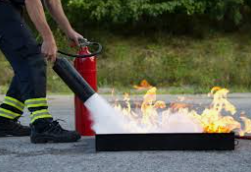
Why Hands-On Fire Extinguisher Training Is Essential for Fire Watch Personnel
In many industrial and construction settings, fire watch duties are a critical part of maintaining workplace safety—especially during hot work activities like welding, cutting, or grinding. Fire watch personnel are tasked with monitoring for signs of fire during and after such operations. While many employers provide general fire safety awareness, one crucial component is often overlooked: hands-on training with fire extinguishers.

Reimagining Equipment Safety: How AI is Empowering Human Operators to Prevent Tragedy
In today’s industrial environments, safety technology is advancing faster than ever before—and one of the most exciting developments is the use of AI-powered cameras that don’t just monitor human behavior—they actively help prevent disasters in real time, even on equipment operated by people. These systems are not autonomous driving platforms. They’re designed to work in tandem with human-operated forklifts and other mobile equipment, providing an intelligent layer of protection without replacing the operator.

Substation Safety: How to Lock Out Breakers Before Downstream Work
Locking out a substation breaker before working on downstream electrical equipment isn’t just a box to check—it’s a critical life-safety process. Substations often involve high-voltage systems capable of delivering lethal incident energy. Failing to isolate power sources or skipping verification steps can result in fatal arc flashes or severe equipment damage. This guide outlines a proper lockout/tagout (LOTO) procedure with practical considerations for real-world application.

The Importance of Travel Direction on Ramps When Operating a Forklift with a Load
Operating a forklift on a ramp comes with heightened risk. Even a small misstep can result in tipping, load loss, or serious injury. One of the most important—and often misunderstood—rules is the direction a forklift should travel on a ramp when carrying a load.
